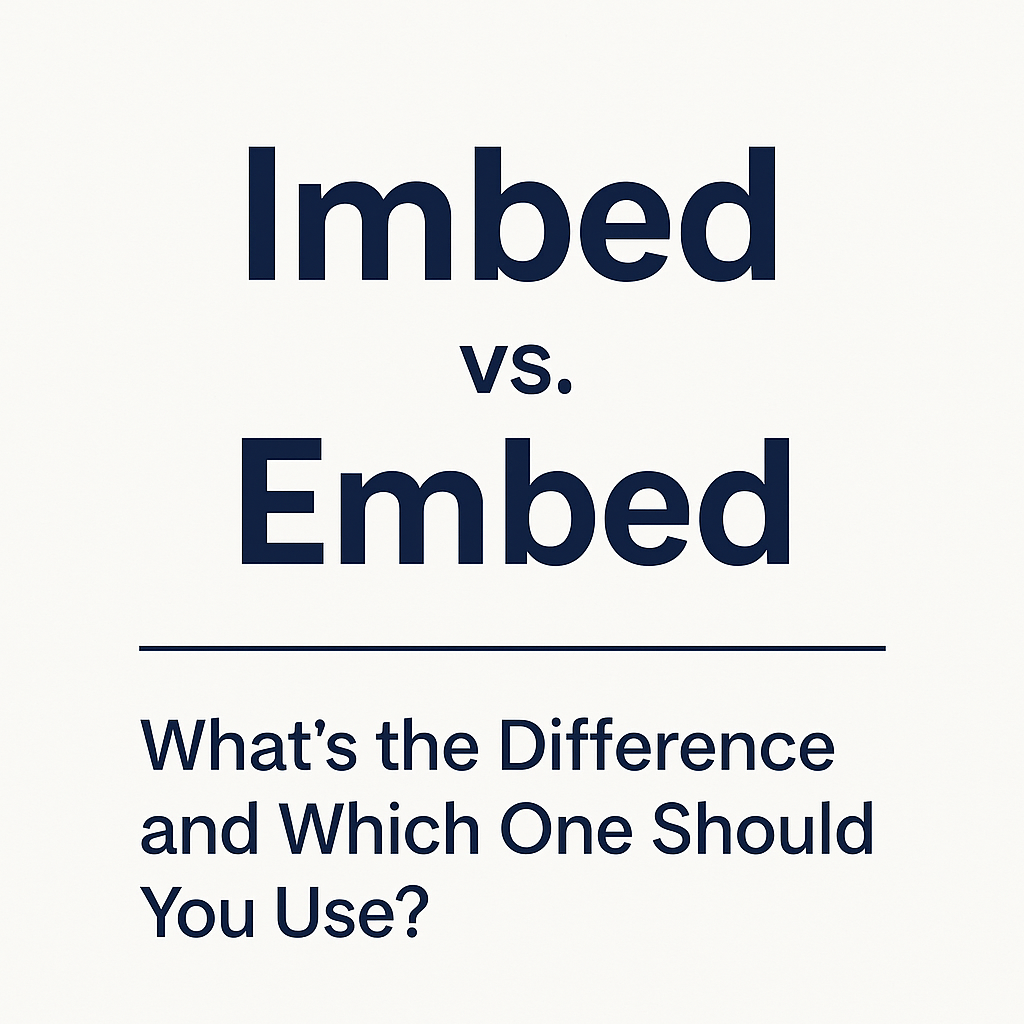Imbed vs Embed—Which One Is Right?

English is full of lookalike words that create confusion and imbed vs embed is a classic case. These near-identical terms often appear interchangeable, but is there a difference? And more importantly, is one more correct than the other?
This guide breaks down the meanings, grammar, usage, and preference for each spelling so you can write with clarity and confidence.
Want to explore more word pairs?
👉 Commonly Confused Words Pillar Page.
👉 Related: Assure vs. Ensure vs. Insure
Grammatical Difference Between Imbed and Embed
What Does Embed Mean?
The verb embed means to fix something firmly into a surrounding substance or context. In modern contexts, it’s widely used in technology, media, science, and education. Whether you’re embedding a video into a blog post or an idea into a narrative, embed is the standard, modern term.
Examples:
- The video was embedded in the presentation slide.
- Core values are embedded into the company’s mission.
What About Imbed?
Imbed shares the same definition as embed; there’s no change in meaning or function. However, it’s considered an outdated spelling. While it may appear in older texts or historical references, embed is now the preferred form in professional and digital writing.
Examples:
- The fossils were deeply imbedded in rock layers.
- Traumatic memories can become imbedded in the psyche.
Verb Conjugations
| Verb Form | Embed | Imbed |
|---|---|---|
| Present | embeds | imbeds |
| Past | embedded | imbedded |
| Progressive | embedding | imbedding |
Real-Life Usage: Correct and Incorrect Examples
Embed – Correct Usage
- The developer embedded the tutorial video in the homepage.
- The cultural metaphor was embedded within the short story.
Imbed – Still Technically Correct, But Rare
- The geologist imbedded the sensor in the soil sample.
- She imbedded the code into the legacy system.
Incorrect Usage
- The blogger imbedded the YouTube video in the article.
Correction: The blogger embedded the YouTube video in the article.
💡 Tip: Use “embed” for any digital, academic, or formal communication. “Imbed” may look outdated to most readers.
Common Mistakes with Imbed Vs Embed
- Mixing spelling in the same document
Avoid alternating between the two—pick one (preferably embed) and stay consistent. - Using “imbed” in professional writing
Though not technically incorrect, it can look old-fashioned. - Assuming they have different meanings
*They do not—imbed is simply a variant spelling.
Memory Tips for Remembering Imbed vs. Embed
- ✅ Embed = E for Email, E for Electronic → Common in digital communication.
- ❌ Imbed = I for Incorrect (in modern use) → Less used, might signal old usage.
- 📌 Think of “embedded video” — a common phrase that never uses imbed.
Make it a habit to visualise the word “embed” in contexts like tech, presentations, and education—it’s the spelling you’ll most often see and use.
Conclusion: So, Is It Imbed or Embed?
When comparing imbed vs. embed, both words mean the same thing, but embed is the modern, standard spelling used in most writing today. Unless you’re quoting old texts or trying to evoke an old-timey style, always choose embed.